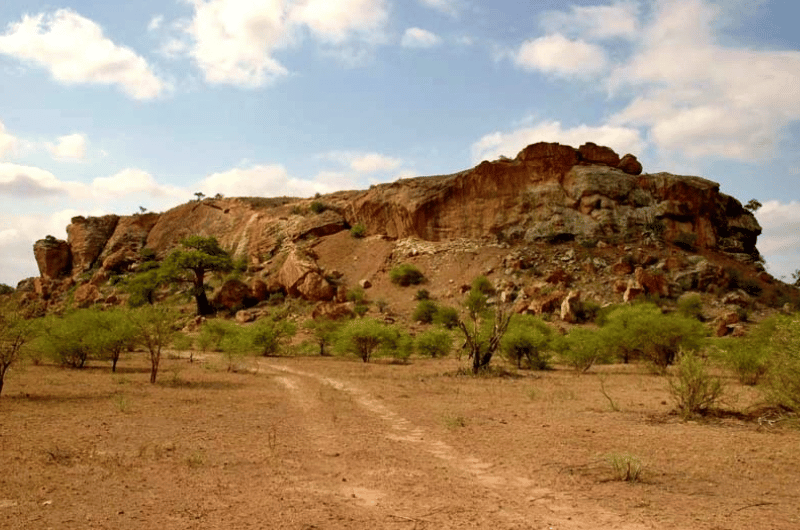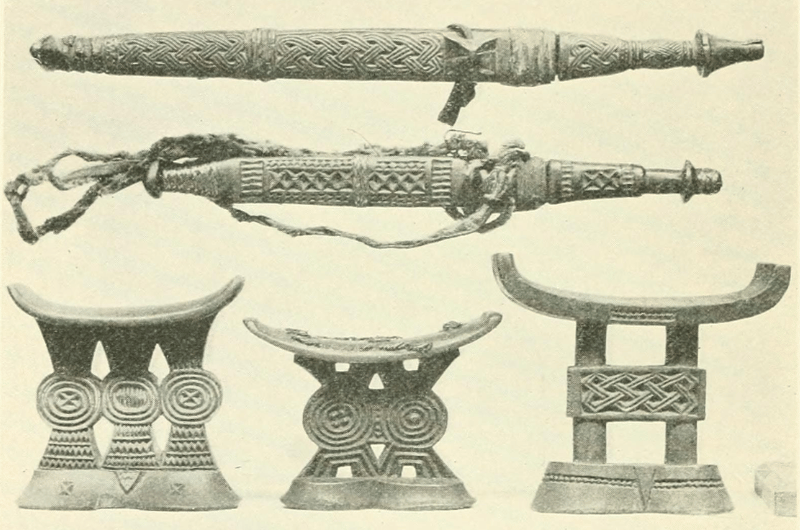The History of Kalanga People
The Kalanga, or BaKalanga, are a vibrant Bantu ethnic group with a rich history and culture. Found primarily in south-western Zimbabwe, northern Botswana, and parts of South Africa, the Kalanga community embodies traditions that have shaped the cultural fabric of Southern Africa for centuries.
So Who Exactly Are the Kalanga?
The Kalanga trace their roots to north-east Africa, specifically Sudan, Egypt, and Ethiopia. Like many Bantu groups, they migrated southwards, eventually settling in Southern Africa. However, the Kalanga stand out as they established themselves south of the Zambezi over 2,000 years ago—centuries before most other groups arrived.
By 100 AD, the Kalanga were firmly settled in what is now Zimbabwe, Mozambique, South Africa, and Botswana. By 500 AD, they had established the Leopard’s Kopje Culture, the first mixed farming society in Sub-Saharan Africa, and were pioneers in mining, smelting, and trading gold, copper, and iron.
By 1,000 AD, they founded Mapungubwe, Sub-Saharan Africa’s first city-state, located at the confluence of the Limpopo and Shashe Rivers. A hub for gold trade, Mapungubwe produced extraordinary artefacts, including the Golden Rhino, which today represents South Africa’s highest national honour.
From Mapungubwe, the Kalanga expanded their influence, establishing the iconic Great Zimbabwe and later Khami. These advanced civilisations became centres of trade, connecting the Kalanga to Arabia, China, Ethiopia, and Portugal. Some historians even suggest that gold from Kalanga lands may have been part of the treasures in the Biblical Solomonic Temple.
Mapungubwe Hill (1220-1300)
By 1220, Mapungubwe Hill became the royal capital during a severe drought. The king settled on the summit, reinforcing his role as a sacral rainmaker, while the people lived below. The site, once inhabited by the San, still holds their ancient rock art.
Kalanga Craftsmanship: Knives & Wooden Pillows
The Kalanga people have a long tradition of fine craftsmanship, seen in their knives with wooden sheaths and intricately carved wooden pillows. These everyday objects, documented in a 1910 ethnographical work, highlight the skill and artistry of Kalanga woodwork.
Laura SA, CC BY-SA 3.0, via Wikimedia Commons
Discover the Rich Heritage of the Kalanga People
A Legacy of Innovation and Resilience
The Kalanga people were not only skilled artisans and traders but also innovators. They led the way in agriculture, city-building, and metallurgy, leaving behind a legacy of ingenuity that continues to inspire today.

The Kalanga Identified by their Tribes and Surnames
Today the Kalanga are divided into 12 major tribes comprising the so-called Bakalanga “proper” (properly BaLozwi), BaLobedu, BaNambya, Vhavenda, BaTalawunda, BaLilima, BaPfumbi, BaLemba, BaLembethu, BaTswapong, BaTwamambo, BaTembe (Mthembu), Babirwa and BaShangwe. They are scattered across Southern Africa from KwaZulu-Natal all the way to Tanzania, speaking almost all the languages to be in all the countries in between.
Being Kalanga therefore does not mean TjiKalanga-speaking, but it is an ethno-racial identity. Once born a Kalanga always a Kalanga, as long as one carries ancestral Kalanga blood. In other words, as long as one has one or both parents who is or was Kalanga, they are Kalanga too. But how do they get to know if they are ancestrally Kalanga? The answer is to be found in their surname.
The Kalanga, wherever they are in the world, are identifiable primarily by their animal and body parts name surnames like Moyo (variants Pelo, Mbilu, Nhliziyo, Mthunzi, Nkiwane), Ndlovu (Ndou, Tlou, Zhowu, Hhowu), Sibanda (Shumba, Tjibanda, Tau, Motaung, Sebata), Ngwenya (Mokoena, Ngwena, Kwena), Dube (Mbizi, Tembo, Mthembu), Mpala (Mhara/Mhala), Tjuma/Tshuma/Chuma (Ng’ombe, Mung’ombe, Sola), Gumbo, Ndebele (Tjibelu, Phupute), Nyathi (Nare, Mokone), Ncube (Shoko, Mokgabong, Tshwene, Motshweneng, Phiri, Msimang, Nsimango), Mpofu (Phofu, Shaba-Thuka), Khupe (Shulo, Hulo, Mvundla), Sebele, Kulube (Ngulube, Musele), Nungu (Maphosa), Nkala, etc.
A close look at the numbers of people bearing these surnames shows that the Kalanga Nation is perhaps one of the largest in Southern Africa, perhaps surpassed only by the Zulu.
Vibrant Culture and Traditions
Kalanga culture is rich in artistry and spirituality. From their rhythmic dances like Ndazula and Hosanna to their intricate pottery, their creativity tells the stories of their ancestors.
Rain-making ceremonies, central to their spirituality, honour Mwali, their supreme deity. Sacred sites such as the Njelele Shrine in Zimbabwe remain key spiritual centres, connecting the Kalanga people to their heritage and the natural world.
Annual celebrations, like the Domboshaba Festival in Botswana, bring the Kalanga together to celebrate and honour these traditions, keeping their cultural flame alive.
Language: A Bridge to Identity
The Kalanga language, known as TjiKalanga in Zimbabwe and Ikalanga in Botswana, is at the heart of their identity. Rich and melodic, it encapsulates Kalanga traditions and wisdom. Recognised as an official language in Zimbabwe, efforts are underway to promote its teaching in schools to ensure it thrives for generations to come.
Reviving the Kalanga Spirit
In a rapidly changing world, the Kalanga people stand as a powerful example of cultural preservation. Initiatives such as teaching the Kalanga language in schools and annual festivals like Domboshaba celebrate this extraordinary heritage. These efforts inspire younger generations to embrace their identity with pride, ensuring the Kalanga story continues.
Strength in Community
The Kalanga are organised into clans, each with unique totems and histories. Clans such as Bo-Sungwasha, Bo-Mndambeli, and BoKumbudzi embody values of unity, resilience, and respect for ancestry. These connections form the backbone of the Kalanga community, reflecting their strength and shared purpose.
Political Legacy: Monomotapa, Togwa, and Lozwi Kingdoms
On the political side, the Kalanga established the greatest kingdoms ever established Africa south of the Sahara, both in terms of power, wealth and expanse. They established the Monomotapa Kingdom which swept from the Zambezi to the Makhado Mountains (Luis Trichardt) north to south, and from the Tendankulu (now Pungwe River) in the middle of Mozambique to the Makadikadi Salt Pans on the boundary of the Kalahari Desert, east west.
The Monomotapa Kingdom, which existed for about 500 years (1000-1500) as the greatest polity in Southern Africa, later disintegrated as a result of external attacks and internal decay. It would be succeeded by the Togwa Kingdom which was headquartered at Khami, 22km west of Bulawayo. The Togwa Kingdom, which had been established by Madabhale Shoko/Ncube, later Tjibundule, existed for about 200 years, after which its ruling dynasty, the Tjibundule Dynasty, was overthrown by Mambo Dombolakona-Tjing’wango Dlembewu Moyo, otherwise known as Tjangamire.
(Tjangamire, a title which originated with the Monomotapa Dynasty when the Arabs still traded in the land, is a combination of two words, the name ‘Tjanga’, and the title Amir/Emir, meaning ‘The Justice.’ The title emir is still in usage in Arab lands, which is why some of them are called Emirates. Tjangamire is not a Shona word as commonly believed. It is a Kalanga-Arabic word.)
The Lozwi Kingdom of course was to be overthrown after a nearly 30-year onslaught by a succession of five impis – four Nguni and three non-Nguni, these being: the Swati of Mtshetshenyana and Nyamazana, the Ngoni of Zwangendaba, the Gaza-Nguni of Soshangane, the Makololo of Sebituane, the Tswana of Kgari and the Portuguese. This Kingdom finally fell about 1830 with the arrival of the Ndebele of Mzilikazi.
The earliest remembered Kalanga kings are Hee Hamuyendazwa Nkalange Hhowu (Ndlovu) and Malambodzibgwa Nkalange Hhowu (it is from these kings that we take our name – Ba-Nkalange, that is, those of Nkalange (some Ndlovu-surnamed Bakalanga still swear by BaNkalange today. We are told that Nkalanga/Nkalange means “People of the North”).
And of course some of the greatest Kalanga kings to ever live were the likes of Mambo Nhu-unotapa (Monomotapa) Mokomba Hhowu, Mambo Dombolakona-Tjing’wango Dlembewu Moyo, Mambo Madabhale Tjibundule Shoko/Ncube.
Academic and Cultural References
Archaeological Studies
T.N. Huffman. (2000). Mapungubwe and the Early State Development in Southern Africa. The African Archaeological Review, 17(2).
Cultural Studies
Gayre, R. (1972). The Origin of the Zimbabwean Gold: Studies in the History of Early African Trade Routes.
Historical Analysis
Summers, R. (1971). Zimbabwe: A History of Southern Rhodesia. Longman.
UNESCO World Heritage Centre
Mapungubwe Cultural Landscape: https://whc.unesco.org/en/list/1099/
Botswana’s Domboshaba Festival
Celebrating Kalanga Heritage: https://www.kalanga.org/culture-and-travel/
Wikipedia
Kalanga People: https://en.wikipedia.org/wiki/Kalanga_people
Kalanga Language: https://en.wikipedia.org/wiki/Kalanga_language
Image of Map: Joan Blaeu, Public domain, via Wikimedia Commons
To visually explore the richness of Kalanga culture, this video offers valuable insights:
Make a Donation
Choose a project to make a donation!
Help in various ways. Choose a project you want to support. Become a regular sponsor to one of our annual events. Any donations, will help to achieve our goal.
Become a Member
Creating self-substaining, communities!
Get involved and become a member and ensure your continous support. You can choose from various mebership categories one that suits you best!
Become a Sponsor
Get involved as a sponsor for our events!
There are many ways of you to become a sponsor or partner of our projects. Browse through our projects and help achieve our targets for the upcoming year.



